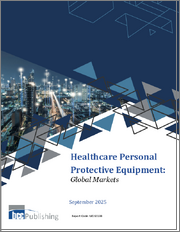
|
시장보고서
상품코드
1623833
개인보호구(PPE) 시장 : 시장 규모, 점유율, 성장 분석 - 제품별, 최종 용도별, 지역별 - 산업 예측(2025-2032년)Personal Protective Equipment (PPE) Market Size, Share, Growth Analysis, By Product (Head Protection, Eye Protection), By End Use (Construction, Manufacturing), By Region - Industry Forecast 2025-2032 |
||||||
세계의 개인보호구(PPE)의 시장 규모는 2023년 801억 달러로 평가되었고, 2024년 899억 달러에서 2032년 1,285억 9,000만 달러로 성장할 전망이며, 예측기간 2025년부터 2032년까지의 CAGR은 5.4%로 성장할 전망입니다.
개인보호구(PPE) 수요는 지속적으로 견조하며 직장의 위험을 줄이고 감염을 포함한 다양한 건강 위험으로부터 개인을 보호하는 중요한 역할을 담당합니다. 장갑, 고글, 인공 호흡기, 방호복 등의 PPE는 특히 외과 수술 시 감염성 물질 노출을 방지하는 헬스케어 등 다양한 산업에서 필수적입니다. PPE의 효과적인 사용과 적절한 폐기는 감염병의 변속기를 막는 데 매우 중요합니다. 유니세프는 특히 코로나19 대응에 있어 세계의 PPE 전개와 조달에 있어 매우 중요한 역할을 하고 있으며, 팬데믹이 시작된 이후 140개국에 6억5,340만개 이상을 전달하고 있습니다. 이것은, Humanitarian Action for Children Appeal(어린이를 위한 인도적 행동 어필)과 같은 이니셔티브로부터의 자금이나, 정부 기관으로부터의 거출금에 의해서 지탱되고 있습니다.
목차
서문
- 조사의 목적
- 조사 범위
- 정의
조사 방법
- 정보 조달
- 2차 데이터 및 1차 데이터의 방법
- 시장 규모 예측
- 시장의 전제조건 및 제한
주요 요약
- 세계 시장 전망
- 공급과 수요 동향 분석
- 부문별 기회 분석
시장 역학 및 전망
- 시장 개요
- 시장 규모
- 시장 역학
- 성장 촉진요인 및 기회
- 성장 억제요인 및 과제
- Porter's Five Forces 분석
주요 시장 인사이트
- 중요성공요인
- 경쟁도
- 주요 투자 기회
- 시장 생태계
- 시장의 매력 지수(2024년)
- PESTEL 분석
- 거시경제지표
- 밸류체인 분석
- 가격 분석
개인보호구(PPE) 시장 규모 : 제품별
- 시장 개요
- 머리 보호
- 헬멧
- 범프 캡
- 눈 보호
- 안전 안경
- 고글
- 얼굴 보호
- 풀 페이스 실드
- 하프 페이스 실드
- 청각 보호
- 이어 머프
- 귀마개
- 보호복
- 열과 불꽃으로부터의 보호
- 화학 방어
- 클린 룸용 의류
- 기계 보호복
- 한정적인 일반 사용
- 기타
- 호흡기 보호
- 공기청정호흡기
- 급기호흡기
- 보호 신발
- 가죽
- 고무
- PVC
- 폴리우레탄
- 기타
- 낙하 방지
- 소프트 상품
- 하드 상품
- 기타
- 손 보호
- 일회용 유형
- 범용
- 화학물질 취급
- 멸균 장갑
- 수술 수술
- 기타
- 재질별 일회용
- 천연 고무
- 니트릴
- 비닐
- 네오프렌
- 폴리에틸렌
- 기타
- 내구성
- 기계용 장갑
- 화학물질 취급
- 내열성 및 난연성
- 기타
- 기타
개인보호구(PPE) 시장 규모 : 최종 용도별
- 시장 개요
- 공사
- 제조업
- 석유 및 가스
- 화학약품
- 음식
- 의약품
- 헬스케어
- 교통기관
- 광업
- 기타
개인보호구(PPE) 시장 규모
- 북미
- 미국
- 캐나다
- 유럽
- 독일
- 스페인
- 프랑스
- 영국
- 이탈리아
- 기타 유럽
- 아시아태평양
- 중국
- 인도
- 일본
- 한국
- 기타 아시아태평양
- 라틴아메리카
- 브라질
- 기타 라틴아메리카
- 중동 및 아프리카
- GCC 국가
- 남아프리카
- 기타 중동 및 아프리카
경쟁 정보
- 상위 5개사 비교
- 주요 기업의 시장 포지셔닝(2024년)
- 주요 시장 기업이 채용한 전략
- 시장의 최근 동향
- 기업의 시장 점유율 분석(2024년)
- 주요 기업의 기업 프로파일
- 기업 개요
- 제품 포트폴리오 분석
- 부문별 점유율 분석
- 수익의 전년 대비 비교(2022-2024년)
주요 기업 프로파일
- 3M(USA)
- Honeywell International Inc.(USA)
- DuPont de Nemours, Inc.(USA)
- MSA Safety Incorporated(USA)
- Ansell Limited(Australia)
- Kimberly-Clark Corporation(USA)
- Lakeland Industries, Inc.(USA)
- Moldex-Metric, Inc.(USA)
- Uvex Winter Holding GmbH & Co. KG(Germany)
- Dragerwerk AG & Co. KGaA(Germany)
- Bullard(USA)
- Radians, Inc.(USA)
- Delta Plus Group(France)
- JSP Ltd(UK)
- Protective Industrial Products, Inc.(PIP)(USA)
- Superior Glove Works Ltd.(Canada)
- Showa Glove Co.(Japan)
- Towa Corporation(Japan)
- ARISTA Industries, Inc.(USA)
- MCR Safety(USA)
결론 및 권장사항
AJY 25.01.16Global Personal Protective Equipment (PPE) Market size was valued at USD 80.1 billion in 2023 and is poised to grow from USD 89.9 billion in 2024 to USD 128.59 billion by 2032, growing at a CAGR of 5.4% during the forecast period (2025-2032).
The demand for personal protective equipment (PPE) remains strong, driven by its crucial role in mitigating workplace hazards and protecting individuals from various health risks, including infections. PPE such as gloves, goggles, respirators, and protective clothing is essential across several industries, notably healthcare, where it safeguards against exposure to infectious materials, particularly during surgical procedures. Effective use and proper disposal of PPE are critical to preventing infection transmission. UNICEF plays a pivotal role in the global distribution and procurement of PPE, particularly in response to COVID-19, having delivered over 653.4 million units to 140 countries since the pandemic began, supported by funding from initiatives like the Humanitarian Action for Children Appeal and contributions from government entities.
Top-down and bottom-up approaches were used to estimate and validate the size of the Global Personal Protective Equipment (Ppe) market and to estimate the size of various other dependent submarkets. The research methodology used to estimate the market size includes the following details: The key players in the market were identified through secondary research, and their market shares in the respective regions were determined through primary and secondary research. This entire procedure includes the study of the annual and financial reports of the top market players and extensive interviews for key insights from industry leaders such as CEOs, VPs, directors, and marketing executives. All percentage shares split, and breakdowns were determined using secondary sources and verified through Primary sources. All possible parameters that affect the markets covered in this research study have been accounted for, viewed in extensive detail, verified through primary research, and analyzed to get the final quantitative and qualitative data.
Global Personal Protective Equipment (Ppe) Market Segmental Analysis
Global Personal Protective Equipment (PPE) Market is segmented by product, end use and region. Based on product, the market is segmented into head protection, eye protection, face protection, hearing protection, protective clothing, respiratory protection, protective footwear, fall protection, hand protection and others. Based on end use, the market is segmented into construction, manufacturing, oil & gas, chemicals, food, pharmaceuticals, healthcare, transportation, mining and others. Based on region, the market is segmented into North America, Europe, Asia Pacific, Latin America and Middle East & Africa.
Driver of the Global Personal Protective Equipment (Ppe) Market
The global market for Personal Protective Equipment (PPE) is being significantly driven by several key factors, including a rise in workplace fatalities, stricter government regulations, growing public consciousness regarding personal safety, and advancements in PPE technology. Organizations such as the International Labour Organization (ILO) and the Occupational Safety and Health Administration (OSHA) are emphasizing stringent regulations for PPE usage as incident rates in workplaces increase. This regulatory focus has significantly spurred market growth, which is expected to persist. Moreover, the ongoing rise in workplace injuries-often resulting from electrocutions, falls, and being caught in machinery-further highlights the critical need for effective PPE to protect workers from various hazards, including physical, chemical, biological, electrical, and mechanical risks.
Restraints in the Global Personal Protective Equipment (Ppe) Market
The Global Personal Protective Equipment (PPE) market is facing notable constraints due to the increasing incorporation of automation and the Internet of Things (IoT) across various manufacturing sectors in both developed and developing countries. While these advancements aim to enhance productivity and minimize costs, they pose significant challenges for the PPE industry. One critical issue is the degradation of materials used in PPE, which can lead to potential electric shock hazards over time. As more businesses turn to automated solutions, ensuring the reliability and safety of protective equipment becomes increasingly complex, ultimately hindering market growth.
Market Trends of the Global Personal Protective Equipment (Ppe) Market
The Global Personal Protective Equipment (PPE) market is currently witnessing three significant trends that are reshaping its landscape across all regions and product categories. Firstly, the heightened focus on worker safety in response to the COVID-19 pandemic has led to an increased demand for advanced PPE solutions, including smart and connected devices that enhance protection. Secondly, sustainability is becoming a central theme as manufacturers pivot towards eco-friendly materials and production processes, responding to both regulatory pressures and consumer preferences. Lastly, the integration of technology, such as IoT and AI, is transforming PPE into more efficient and data-driven solutions, driving innovation and increasing market competitiveness.
Table of Contents
Introduction
- Objectives of the Study
- Scope of the Report
- Definitions
Research Methodology
- Information Procurement
- Secondary & Primary Data Methods
- Market Size Estimation
- Market Assumptions & Limitations
Executive Summary
- Global Market Outlook
- Supply & Demand Trend Analysis
- Segmental Opportunity Analysis
Market Dynamics & Outlook
- Market Overview
- Market Size
- Market Dynamics
- Drivers & Opportunities
- Restraints & Challenges
- Porters Analysis
- Competitive rivalry
- Threat of substitute
- Bargaining power of buyers
- Threat of new entrants
- Bargaining power of suppliers
Key Market Insights
- Key Success Factors
- Degree of Competition
- Top Investment Pockets
- Market Ecosystem
- Market Attractiveness Index, 2024
- PESTEL Analysis
- Macro-Economic Indicators
- Value Chain Analysis
- Pricing Analysis
Global Personal Protective Equipment (PPE) Market Size by Product & CAGR (2025-2032)
- Market Overview
- Head Protection
- Hard Hats
- Bump Caps
- Eye Protection
- Safety Glasses
- Goggles
- Face Protection
- Full Face Shields
- Half Face Shields
- Hearing Protection
- Earmuffs
- Earplugs
- Protective Clothing
- Heat & Flame Protection
- Chemical Defending
- Clean Room Clothing
- Mechanical Protective Clothing
- Limited General Use
- Others
- Respiratory Protection
- Air-Purifying Respirator
- Supplied Air Respirators
- Protective Footwear
- Leather
- Rubber
- PVC
- Polyurethane
- Others
- Fall Protection
- Soft Goods
- Hard Goods
- Others
- Hand Protection
- Disposable By Type
- General Purpose
- Chemical Handling
- Sterile Gloves
- Surgical
- Others
- Disposable By Material
- Natural Rubber
- Nitrile
- Vinyl
- Neoprene
- Polyethylene
- Others
- Durable
- Mechanical Gloves
- Chemical Handling
- Thermal/Flame Retardant
- Others
- Others
Global Personal Protective Equipment (PPE) Market Size by End Use & CAGR (2025-2032)
- Market Overview
- Construction
- Manufacturing
- Oil & Gas
- Chemicals
- Food
- Pharmaceuticals
- Healthcare
- Transportation
- Mining
- Others
Global Personal Protective Equipment (PPE) Market Size & CAGR (2025-2032)
- North America (Product, End Use)
- US
- Canada
- Europe (Product, End Use)
- Germany
- Spain
- France
- UK
- Italy
- Rest of Europe
- Asia Pacific (Product, End Use)
- China
- India
- Japan
- South Korea
- Rest of Asia-Pacific
- Latin America (Product, End Use)
- Brazil
- Rest of Latin America
- Middle East & Africa (Product, End Use)
- GCC Countries
- South Africa
- Rest of Middle East & Africa
Competitive Intelligence
- Top 5 Player Comparison
- Market Positioning of Key Players, 2024
- Strategies Adopted by Key Market Players
- Recent Developments in the Market
- Company Market Share Analysis, 2024
- Company Profiles of All Key Players
- Company Details
- Product Portfolio Analysis
- Company's Segmental Share Analysis
- Revenue Y-O-Y Comparison (2022-2024)
Key Company Profiles
- 3M (USA)
- Company Overview
- Business Segment Overview
- Financial Updates
- Key Developments
- Honeywell International Inc. (USA)
- Company Overview
- Business Segment Overview
- Financial Updates
- Key Developments
- DuPont de Nemours, Inc. (USA)
- Company Overview
- Business Segment Overview
- Financial Updates
- Key Developments
- MSA Safety Incorporated (USA)
- Company Overview
- Business Segment Overview
- Financial Updates
- Key Developments
- Ansell Limited (Australia)
- Company Overview
- Business Segment Overview
- Financial Updates
- Key Developments
- Kimberly-Clark Corporation (USA)
- Company Overview
- Business Segment Overview
- Financial Updates
- Key Developments
- Lakeland Industries, Inc. (USA)
- Company Overview
- Business Segment Overview
- Financial Updates
- Key Developments
- Moldex-Metric, Inc. (USA)
- Company Overview
- Business Segment Overview
- Financial Updates
- Key Developments
- Uvex Winter Holding GmbH & Co. KG (Germany)
- Company Overview
- Business Segment Overview
- Financial Updates
- Key Developments
- Dragerwerk AG & Co. KGaA (Germany)
- Company Overview
- Business Segment Overview
- Financial Updates
- Key Developments
- Bullard (USA)
- Company Overview
- Business Segment Overview
- Financial Updates
- Key Developments
- Radians, Inc. (USA)
- Company Overview
- Business Segment Overview
- Financial Updates
- Key Developments
- Delta Plus Group (France)
- Company Overview
- Business Segment Overview
- Financial Updates
- Key Developments
- JSP Ltd (UK)
- Company Overview
- Business Segment Overview
- Financial Updates
- Key Developments
- Protective Industrial Products, Inc. (PIP) (USA)
- Company Overview
- Business Segment Overview
- Financial Updates
- Key Developments
- Superior Glove Works Ltd. (Canada)
- Company Overview
- Business Segment Overview
- Financial Updates
- Key Developments
- Showa Glove Co. (Japan)
- Company Overview
- Business Segment Overview
- Financial Updates
- Key Developments
- Towa Corporation (Japan)
- Company Overview
- Business Segment Overview
- Financial Updates
- Key Developments
- ARISTA Industries, Inc. (USA)
- Company Overview
- Business Segment Overview
- Financial Updates
- Key Developments
- MCR Safety (USA)
- Company Overview
- Business Segment Overview
- Financial Updates
- Key Developments



















